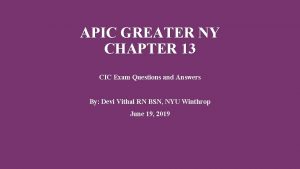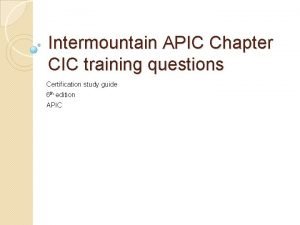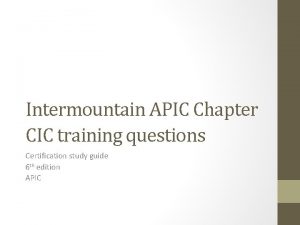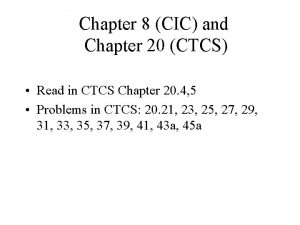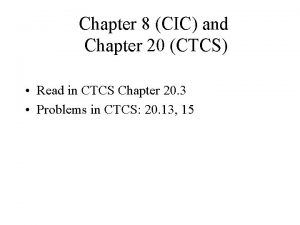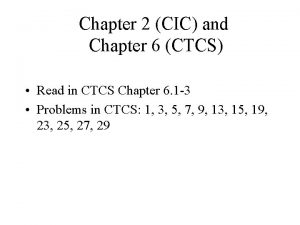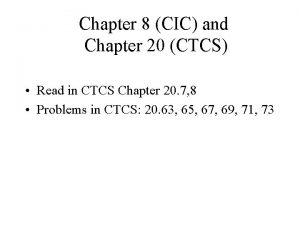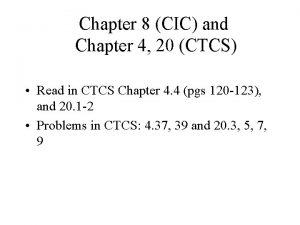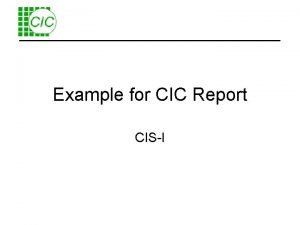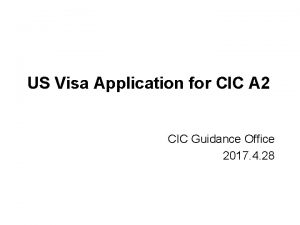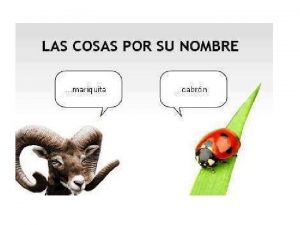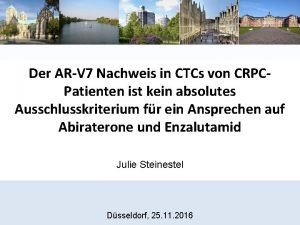Chapter 2 CIC and Chapter 8 CTCS Read














- Slides: 14

Chapter 2 (CIC) and Chapter 8 (CTCS) • Read in CTCS Chapter 8. 1, 4, 6 -8 • Problems in CTCS: 3, 31, 33, 47 abcdf, 49 bd, 51 a, 59 bd, 61

Ozone • A pollutant in troposphere • A filter of UV light in stratosphere • 3 O 2(g) + Energy 2 O 3(g) 4 Energy = lightning, photocopier, electric arc, etc. • Allotrope (e. g. , graphite, diamond, fullerene) • Used for bleaching (wood, fabric, water) • Why is ozone different from oxygen and why is it helpful in one part of our atmosphere but not in another?

Periodic Table • Why is periodic table laid out the way it is? • Li, Na, K demo • Valence electrons (e-) – account for chemical and physical properties of elements and are the outermost electrons of an atom • Can be determined for any representative element by the number above the Group (Family) in the periodic table (1 A-8 A) • Families: Alkali metal, Alkaline Earth, Chalcogen, Halogen, Noble Gas

Getting to Low Energy • Noble Gas – “inert” because it is stable by itself • These elements have 8 valence e- (except He) • Other elements try to attain this low energy state as well • Elements do this by gaining, losing, or sharing e - • Sharing of e- yields covalent bonds

Lewis Structures • Lewis symbols • Two H· atoms can share their electron so that each looks like He (noble gas) • The line between H’s is shorthand for 2 eand is called a single bond

• In the case of fluorine gas (F 2), each atom can share an e- so that at any point in time, either atom can look like neon (It follows the Octet Rule) • This structure has both bonding and nonbonding epairs Q: Draw Lewis structures for Cl 2 and CH 4

Multiple Bonds • For a Lewis structure of O 2 each O needs two e- to supplement the 6 valence e- of oxygen • This requires a sharing of 4 e- total • Oftentimes the nonbonding e- on Lewis structures are not shown • This molecule has a double bond • These are shorter, stronger and harder to break

Rules for Lewis Structures 1. Count the number of valence e 2. Draw a structure where the peripheral atoms surround the central atom a. The central atom is usually the first atom written (S in SO 42 -, I in IO 65 -) b. The central atom is usually the most metallic element c. H can never be the central atom because it can only have a duet meaning one bond d. When H and O exist in the same molecule, the H is usually attached to the O atom (H 2 CO 3) 3. Draw covalent (or shared) bonds between the peripheral atoms and the central atom

4. Determine the number of valence e- still available 5. Fill the octets for the peripheral atoms. 6. Fill the octet for the central atom (if there are enough valence e-) 7. If there are not enough e- to accomplish #6, make multiple bonds between the central and peripheral atoms You should check two things when finished: 1. Are you showing the correct number of valence e -? 2. Does each atom have an octet?

Draw Lewis Structures for CO 2, N 2, CO, PCl 3, CH 3 OH and H 2 CO It doesn’t matter what the bond angles are

The structure of O 3 1. 3 x 6 = 18 e 2, 3. O-O-O 4. 18 - 4 = 14 e 5. 6. 7. *These are not linear molecules

Resonance • These two structures are averaged together to get the “actual” structure and they are referred to as resonance structures • The actual structure has an O-O bond length of 1. 28Å compared to an O-O typically at 1. 47Å and O=O at 1. 21Å • Resonance structures only move e-, not atoms

Formal Charge • Write a Lewis Structure for Cl 2 CO • How do you know which one is closer to reality? • F. C. = #valence e- - #lone pair e- - #bonds – The total sum of formal charges should be equal to the charge on the ion/molecule – You should end up with a Lewis structure that has formal charges as close to 0 as possible

Exceptions to Octet Rule • Write a Lewis structure for NO • Many exceptions exist – Odd numbered electron systems – Electron deficient atoms (Be, B, Al, etc. ) – Central atom has more than 8 electrons (P, S, I, etc. ) • Write a Lewis structure for BF 3 and calculate formal charges. How does it react with NH 3?
 Uvećanica od knjiga
Uvećanica od knjiga Cic certification
Cic certification What is a cic certification?
What is a cic certification? Cic portal zayed
Cic portal zayed Cic exam questions
Cic exam questions Dare to learn cic
Dare to learn cic Avaya vs customer interaction center cic
Avaya vs customer interaction center cic Cic annual report 2019
Cic annual report 2019 Cic certification study guide
Cic certification study guide Puntaje final del deudor sfn
Puntaje final del deudor sfn Roy boukidjian
Roy boukidjian Apic certification study guide
Apic certification study guide Cic
Cic Cwmf work stages
Cwmf work stages Shared future cic
Shared future cic




